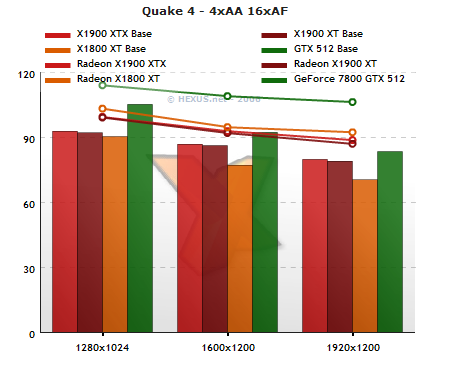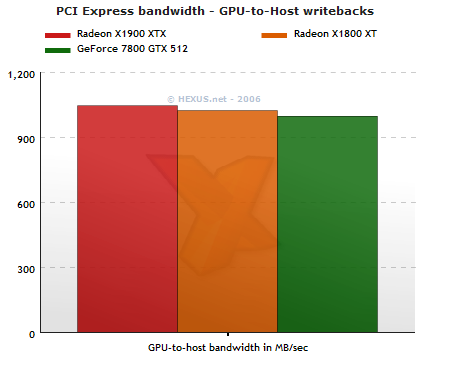Quake 4 and PCI Express Bandwidth Testing
Quake 4
With Call of Duty 2 throwing its toys out of the pram, CoR not working properly on NVIDIA hardware (*titter*) and Need For Speed throwing hissy fits, Quake 4 is our last game test for the time being, until we fix the issues. Keep an eye out over the next couple of days.
If your choice is between the boards on test, and you love Quake 4 and you're looking forward to Quake Wars so much you drool in pints, NVIDIA's GTX 512 is the hardware for you. The basic design of G70 lends itself to nice Doom3 engine performance, and ATI's OpenGL ICD isn't the hottest component to come bundled with CATALYST, if we're all honest. R580 offers up usable increases in performance over R520, but X1900 XTX isn't a detectable performance win over X1900 XT.
PCI Express Bandwidth
As a nod to the modern GPU's ability to act prefectly well as a generally programmable parallel stream processor, and with R5-series GPUs supporting scatter writes into card memory from shader programs via an OpenGL extension, testing the PCI Express bandwidth of these high-end graphics boards when pushing data back to the GPU is prudent.
To pair with the impressive shader rate, raw memory bandwidth and theoretically impressive fragment processor branching performance (somewhat crucial to general purpose GPU work), R580 and R520 have over 1000MiB/sec of writeback bandwidth to use, given a suitable host platform. Indeed, R580 is the first GPU, backed by nearly 50GiB/sec of local memory bandwidth, we've tested that breaks the 1GiB/sec barrier when squirting data back to the host. More on that in the conclusion.









